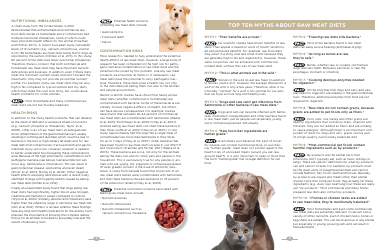Raw Meat Diets
Raw Meat Diets are typically used as an alternative pet food regimen for some dog and cat owners who believe in mimicking a natural diet for their pets. It involves feeding raw meat, bones, and organs to pets instead of commercially processed pet foods. However, it is important to note that there are potential risks and drawbacks associated with this diet, such as bacterial contamination and nutritional imbalances. Consult with a veterinarian before considering this type of diet for your pet.
FAQ
Q: What is a raw meat diet?
A: A raw meat diet, also known as a raw food diet or BARF diet (Biologically Appropriate Raw Food), is a diet that consists of feeding raw meats, bones, organs, and some vegetables to pets.
Q: Why do people feed their pets a raw meat diet?
A: Some people choose to feed their pets a raw meat diet because they believe it promotes better digestion, healthier skin and coat, and overall better health for their pets.
Q: Can pets get all the nutrients they need from a raw meat diet?
A: When properly balanced, a raw meat diet can provide pets with all the necessary nutrients they need. However, it is essential to ensure that the diet includes a variety of meats, organ meats, and vegetables.
Q: What are the potential risks of feeding pets a raw meat diet?
A: There are some risks associated with feeding pets a raw meat diet, such as bacterial contamination, nutritional imbalances, choking hazards from bones, and potential harm to human health from handling raw meat.
Q: Is a raw meat diet suitable for all pets?
A: A raw meat diet may not be suitable for all pets, especially those with certain health conditions or compromised immune systems. It is best to consult with a veterinarian before starting a raw meat diet for your pet.
Q: Are there commercially prepared raw meat diets available?
A: Yes, there are commercially prepared raw meat diets available for pets. These diets are formulated to be nutritionally balanced and eliminate some of the risks associated with handling raw meat at home.





















